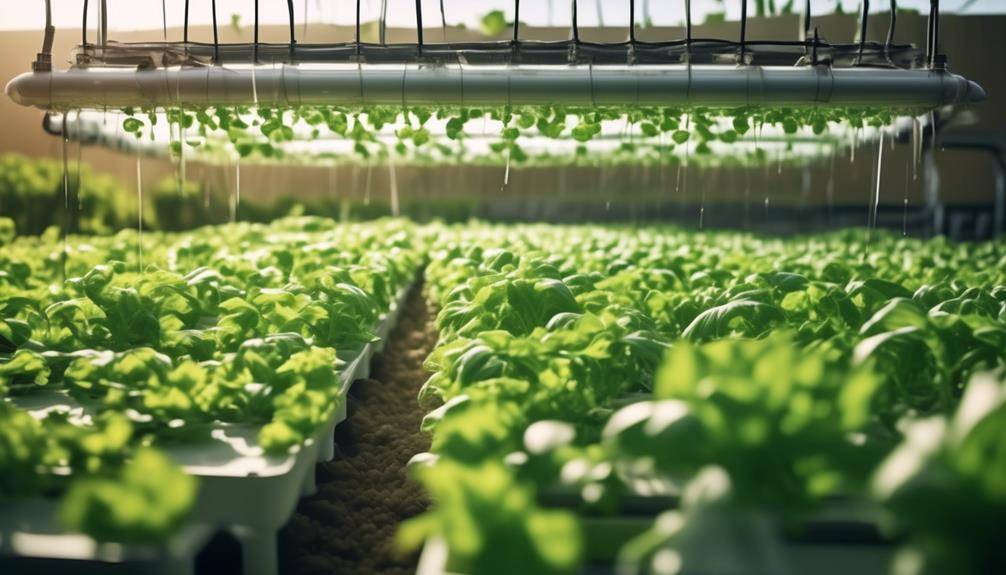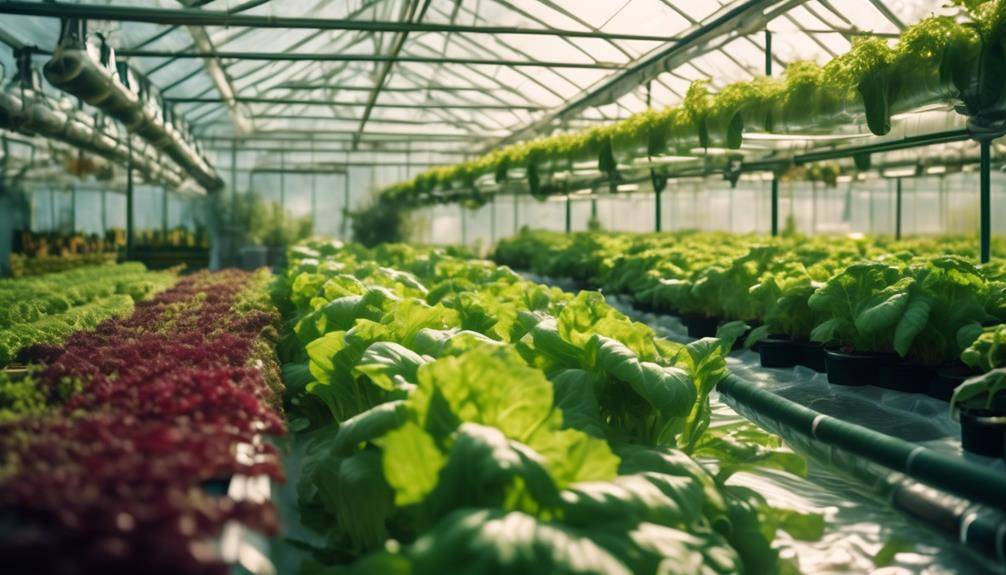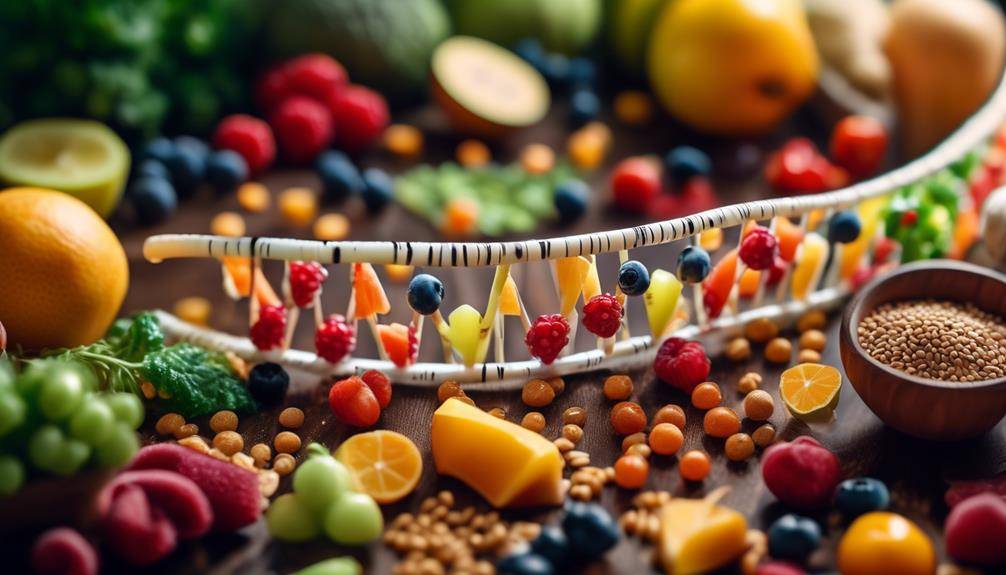The Great Health Benefits of Molecular Gastronomy

Health Benefits of Molecular Gastronomy; Are you tired of the same old meal options that leave you feeling unsatisfied and lacking in nutritional value? Well, prepare to embark on a culinary journey like no other. With molecular gastronomy, a scientific approach to cooking, you can unlock a world of health benefits that will revolutionize the way you eat. From enhancing nutrient retention to promoting portion control, molecular gastronomy is not just about creating visually stunning dishes; it’s about nourishing your body in the most innovative and delicious ways possible. But that’s just the beginning. So, are you ready to discover the secrets of this groundbreaking culinary technique and elevate your dining experience to new heights?
Enhances Nutrient Retention
Molecular gastronomy techniques not only create visually captivating dishes, but also actively enhance nutrient retention, ensuring that the food you consume is packed with maximum nutritional value. By utilizing innovative methods and ingredients, molecular gastronomy improves nutrient absorption and incorporates gut-friendly ingredients, promoting overall health and well-being.
One of the ways molecular gastronomy enhances nutrient retention is through the use of sous vide cooking. This technique involves vacuum-sealing food in a bag and cooking it at a controlled temperature for an extended period. By cooking food at a lower temperature, sous vide preserves the natural nutrients that can be lost through traditional cooking methods such as boiling or frying. This results in a higher retention of vitamins, minerals, and antioxidants in your meals.
Furthermore, molecular gastronomy introduces gut-friendly ingredients that aid in nutrient absorption. For example, chefs often incorporate probiotics into their dishes, which are beneficial bacteria that promote a healthy gut microbiome. These probiotics can improve the digestion and absorption of nutrients, ensuring that you get the most out of your meals.
Additionally, molecular gastronomy techniques such as foams and gels allow for better nutrient distribution within a dish. By transforming ingredients into different textures and forms, these techniques enable a more even distribution of nutrients throughout the dish. This means that each bite you take contains a balanced amount of essential nutrients, maximizing their absorption by your body.
Promotes Portion Control
When it comes to portion control, molecular gastronomy can offer several benefits. By enhancing flavor perception, it allows you to enjoy smaller portions without feeling deprived. Additionally, innovative culinary techniques can create visually appealing and satisfying dishes using fewer ingredients. Finally, the combination of healthier ingredients in molecular gastronomy can help you make more mindful choices and maintain a balanced diet.
Enhanced Flavor Perception
Enhanced flavor perception can effectively promote portion control, allowing individuals to enjoy their food while maintaining a healthy balance in their diet. Flavor perception enhancement techniques, such as those used in molecular gastronomy, can stimulate taste buds and enhance the overall sensory experience of a dish.
By intensifying the flavors, individuals may feel more satisfied with smaller portions, reducing the urge to overeat. Research has shown that when people have a heightened perception of flavor, they tend to eat less and feel more satiated. This can be attributed to the fact that flavor plays a crucial role in our enjoyment of food. When we are able to fully savor the taste, aroma, and texture of a dish, we are more likely to feel content with smaller portions, ultimately contributing to healthier eating habits.
Innovative Culinary Techniques
Using innovative culinary techniques can effectively promote portion control and help individuals maintain a healthy balance in their diet. Culinary creativity and food presentation play a crucial role in influencing portion sizes and overall food consumption. Here are three ways in which these techniques can contribute to portion control:
- Miniature Versions: Creating smaller, bite-sized versions of dishes can help individuals consume smaller portions without feeling deprived. These miniature creations can be visually appealing and satisfying, allowing individuals to enjoy a variety of flavors without overeating.
- Deconstructed Dishes: By deconstructing traditional dishes into separate components, chefs can control portion sizes and emphasize the quality of each ingredient. This technique allows individuals to appreciate the flavors and textures in smaller portions, promoting portion control while still providing a satisfying dining experience.
- Artful Plating: The visual presentation of food can greatly impact portion control. Chefs can use artistic plating techniques to create visually appealing dishes that appear more substantial than they actually are. By using different colors, textures, and shapes, individuals are more likely to feel satisfied with smaller portions, reducing the risk of overeating.
Incorporating these innovative culinary techniques not only enhances the dining experience but also promotes portion control, helping individuals maintain a healthy and balanced diet.
Healthier Ingredient Combinations
Healthier ingredient combinations can be a valuable tool in promoting portion control and maintaining a healthy and balanced diet. By utilizing healthier cooking techniques and thoughtful flavor pairings, you can create dishes that are satisfying and nutritious without sacrificing taste. One effective strategy is to incorporate more vegetables into your meals. Not only do vegetables add bulk and fiber, which can help you feel fuller for longer, but they also provide essential vitamins and minerals.
Another approach is to use lean proteins, such as skinless chicken or fish, instead of fatty meats. These proteins are lower in calories and saturated fat, making them a healthier option. Additionally, opting for whole grains instead of refined grains can provide more nutrients and fiber while keeping portion sizes in check. Overall, making smarter ingredient choices can contribute to portion control and support your overall health and wellness.
Boosts Digestive Health
When it comes to boosting digestive health, molecular gastronomy offers several benefits. By using gut-friendly ingredients, such as probiotics and fiber-rich foods, it helps promote a healthy gut microbiome. Additionally, the innovative cooking techniques and combinations of ingredients in molecular gastronomy can enhance nutrient absorption and improve the overall digestion process. So, if you’re looking to improve your digestive health, incorporating molecular gastronomy into your diet may be worth considering.
Gut-Friendly Ingredients
Incorporating gut-friendly ingredients into your diet can significantly enhance digestive health. Here are three gut-friendly ingredients that can help improve your gut health:
- Fiber-rich foods: Consuming foods high in fiber, such as whole grains, fruits, vegetables, and legumes, can promote healthy digestion. Fiber adds bulk to your stool, making it easier to pass through the digestive tract and preventing constipation.
- Fermented foods: Including fermented foods like yogurt, sauerkraut, and kimchi in your diet can introduce beneficial bacteria into your gut. These probiotics help balance the gut microbiome, improving digestion and nutrient absorption.
- Omega-3 fatty acids: Foods rich in omega-3 fatty acids, like fatty fish, flaxseeds, and walnuts, have anti-inflammatory properties that can reduce gut inflammation. This can alleviate symptoms of conditions like irritable bowel syndrome (IBS) and promote a healthy gut environment.
Improved Nutrient Absorption
To further enhance your digestive health, let’s now explore how improved nutrient absorption plays a vital role in optimizing gut function. Molecular gastronomy techniques, such as sous-vide cooking and emulsification, can enhance the absorption of essential nutrients in your body. These techniques promote increased nutrient absorption by breaking down food into smaller particles, making it easier for your body to digest and absorb the nutrients.
The improved digestion process ensures that your body efficiently extracts the necessary vitamins, minerals, and other essential compounds from the food you consume. This optimization of nutrient absorption not only aids in overall health but also helps prevent nutrient deficiencies. By incorporating molecular gastronomy techniques into your cooking, you can support your digestive system and promote optimal nutrient absorption for improved well-being.
Enhanced Digestion Process
Enhancing the digestion process through molecular gastronomy techniques can significantly boost your digestive health. By utilizing innovative cooking techniques, molecular gastronomy enhances the breakdown of food in your digestive system, leading to improved nutrient absorption. Here are three ways molecular gastronomy improves your digestion:
- Increased bioavailability: Molecular gastronomy techniques can break down food into smaller, more easily digestible particles. This increases the surface area of the food, allowing for better absorption of nutrients by the body.
- Enhanced enzyme activity: Certain molecular gastronomy methods, such as sous vide cooking, can preserve the natural enzymes present in food. These enzymes aid in the digestion process, making it easier for your body to break down and absorb nutrients.
- Improved gut health: Molecular gastronomy can promote the growth of beneficial bacteria in your gut. Fermentation techniques used in molecular gastronomy can increase the probiotic content of foods, which can positively influence your digestive health.
Reduces the Use of Unhealthy Ingredients
Using molecular gastronomy techniques can significantly reduce the presence of unhealthy ingredients in dishes, promoting a healthier and more nutritious dining experience. By incorporating these techniques, chefs can reduce calorie intake and promote healthy cooking techniques.
One way in which molecular gastronomy reduces the use of unhealthy ingredients is through the use of natural thickeners. Traditional cooking methods often rely on the use of heavy creams, butter, and oils to achieve a rich and creamy texture. However, molecular gastronomy techniques allow chefs to achieve similar textures using natural thickeners such as agar-agar, xanthan gum, and carrageenan. These thickeners not only reduce the calorie content of the dish but also provide additional health benefits such as promoting satiety and maintaining blood sugar levels.
Another way in which molecular gastronomy reduces the use of unhealthy ingredients is by utilizing low-fat cooking methods. For example, sous vide cooking, a popular technique in molecular gastronomy, involves vacuum-sealing food in a bag and cooking it at a precise temperature in a water bath. This method eliminates the need for excessive amounts of oil or butter, resulting in a healthier end product. Additionally, molecular gastronomy techniques such as spherification and gelification allow chefs to create unique and flavorful dishes without the need for excessive salt or sugar.
Increases Bioavailability of Nutrients
By utilizing molecular gastronomy techniques, chefs can not only reduce the use of unhealthy ingredients but also increase the bioavailability of nutrients in their dishes. This means that the body is able to absorb and utilize these nutrients more efficiently, leading to improved health and well-being. Here are three ways molecular gastronomy can increase nutrient absorption and improve the digestive process:
- Enhanced Nutrient Release: Molecular gastronomy techniques such as spherification and encapsulation can help release nutrients in a controlled manner. For example, by encapsulating a nutrient-rich ingredient within a gel sphere, the nutrient becomes protected and released slowly during digestion. This allows for better absorption and utilization by the body, maximizing the nutritional benefits of the dish.
- Improved Texture and Digestibility: Molecular gastronomy techniques can also alter the texture and structure of ingredients, making them easier to digest. By using methods such as foams, gels, and emulsions, chefs can create dishes that are more palatable and enjoyable to eat. This can lead to better digestion and nutrient absorption, as the body can break down and assimilate the nutrients more effectively.
- Increased Micronutrient Retention: Traditional cooking methods often result in the loss of micronutrients due to heat, water, and exposure to air. However, molecular gastronomy techniques can help retain these valuable micronutrients. For instance, using sous vide cooking, which involves vacuum-sealing food and cooking it at a precise low temperature, helps preserve the nutritional content of the ingredients. This ensures that the body can absorb a higher amount of essential vitamins and minerals, leading to improved overall health.
Enhances Flavor Without Adding Excess Salt or Sugar
Molecular gastronomy techniques enhance the flavor profiles of dishes without the need for excessive amounts of salt or sugar. By utilizing scientific principles and innovative cooking methods, molecular gastronomy increases flavor complexity and enhances taste perception. Traditional methods of seasoning often rely heavily on salt and sugar to enhance the taste of dishes. However, excessive consumption of these ingredients can have negative health consequences, such as high blood pressure and weight gain.
One way molecular gastronomy achieves enhanced flavor without excessive salt or sugar is through the use of umami-rich ingredients. Umami is one of the five basic tastes, known for its savory and meaty flavor. Chefs who employ molecular gastronomy techniques often incorporate umami-rich ingredients, such as mushrooms, soy sauce, and miso, to enhance the savory taste of their dishes. These ingredients add depth and complexity to the flavor profile, reducing the need for excessive salt or sugar.
Furthermore, molecular gastronomy techniques allow chefs to manipulate texture and temperature in order to enhance taste perception. For example, the use of liquid nitrogen can create unique frozen textures that intensify the flavors of ingredients. By altering the texture of a dish, chefs can create a more enjoyable eating experience, allowing flavors to be perceived in a different and heightened way. This can lead to a decreased desire for excessive salt or sugar, as the enhanced flavors are already satisfying to the palate.
Improves Texture and Mouthfeel of Dishes
When it comes to culinary innovation, molecular gastronomy excels at improving the texture and mouthfeel of dishes, providing an enhanced dining experience. By employing scientific techniques and ingredients, chefs can create unique textures that add a new sensory appeal to the dish. This experimentation allows for the creation of dishes with unexpected textures and combinations, elevating the overall dining experience for the consumer.
Enhanced Dining Experience
Enhancing the dining experience involves skillfully manipulating the texture and mouthfeel of dishes, resulting in a more enjoyable and satisfying culinary adventure. Molecular gastronomy techniques have revolutionized the way food is prepared and presented, taking elevated dining to new heights. Through sensory exploration, chefs are able to create dishes that not only taste delicious but also provide a unique and memorable experience for diners. Here are three ways in which molecular gastronomy enhances the dining experience:
- Textural contrasts: By using techniques like spherification or foams, chefs can create surprising textural contrasts within a dish. This adds an element of surprise and excitement, making each bite a delightful journey for the palate.
- Enhanced mouthfeel: Molecular gastronomy allows chefs to manipulate the texture of ingredients, resulting in dishes with a smoother, creamier, or more velvety mouthfeel. This enhances the overall dining experience by creating a luxurious and indulgent sensation on the tongue.
- Playful presentations: Molecular gastronomy techniques often involve innovative plating methods that engage both the eyes and the taste buds. By transforming ingredients into unique shapes or using edible elements as serving vessels, chefs create visually stunning dishes that captivate diners and elevate their dining experience.
Sensory Appeal
To enhance the sensory appeal of dishes, molecular gastronomy techniques skillfully manipulate the texture and mouthfeel, creating a more enjoyable and indulgent dining experience. Sensory stimulation plays a crucial role in how we perceive flavor. By using molecular gastronomy techniques, chefs can alter the texture and mouthfeel of ingredients, which in turn affects our perception of taste. For example, the use of hydrocolloids like agar-agar or xanthan gum can create a smooth and creamy texture in dishes like sauces or ice creams.
Similarly, spherification techniques can transform liquids into small, flavorful spheres that burst in the mouth, providing a unique sensory experience. These manipulations of texture and mouthfeel not only elevate the overall dining experience but also enhance flavor perception, making each bite more memorable and satisfying.
Culinary Innovation
By employing innovative culinary techniques, chefs can skillfully enhance the texture and mouthfeel of dishes, resulting in a more pleasurable and satisfying dining experience. Through the application of food science and gastronomic techniques, they are able to transform ingredients in ways that create unique sensations in the mouth. Here are three ways in which culinary innovation improves texture and mouthfeel:
- Emulsification: Chefs use emulsifiers to create stable mixtures of fat and water, resulting in creamy and smooth textures. This technique is often employed in sauces, dressings, and foams.
- Spherification: By using sodium alginate and calcium chloride, chefs can create small spheres with liquid centers. These spheres burst in the mouth, releasing a burst of flavor and providing a surprising textural experience.
- Aerating: Chefs use whipping and foaming techniques to introduce air into ingredients, resulting in lighter and fluffier textures. This technique is commonly used in mousses, soufflés, and desserts.
Supports Weight Management Goals
Including molecular gastronomy techniques in your cooking repertoire can be a valuable tool in achieving your weight management goals. With its focus on culinary innovation and scientific principles, molecular gastronomy offers numerous benefits that can support caloric control and appetite regulation.
One of the key advantages of molecular gastronomy is the ability to create dishes with reduced caloric content without compromising on taste. By employing techniques such as spherification and emulsification, chefs can transform high-calorie ingredients into lighter alternatives. For example, by encapsulating a rich sauce in a gelatin sphere, you can enjoy the same burst of flavor with a fraction of the calories. This innovative approach allows you to indulge in your favorite dishes while still maintaining a calorie deficit.
Furthermore, molecular gastronomy techniques can also help regulate your appetite. By manipulating the textures and presentations of food, you can enhance the sensory experience and create a greater sense of satiety. For instance, the use of foams and gels can add airiness and volume to dishes, making them appear more substantial. This visual trick can trick your brain into feeling fuller faster, preventing overeating and promoting portion control.
Research has shown that molecular gastronomy techniques can have a positive impact on weight management. A study published in the Journal of Food Science found that the incorporation of molecular gastronomy principles in the preparation of low-calorie meals led to increased satiety and reduced calorie intake. By taking advantage of these innovative techniques, you can better manage your weight and maintain a healthy lifestyle.
Enhances Antioxidant Activity in Foods
Enhancing antioxidant activity in foods through molecular gastronomy can have significant health benefits for you. By increasing the levels of food antioxidants, molecular gastronomy helps to combat free radicals in your body, protecting against oxidative stress and reducing the risk of chronic diseases. This improvement in overall health can be attributed to the enhanced defense mechanisms provided by molecular gastronomy techniques.
Increased Food Antioxidants
Increasing the presence of antioxidants in food can enhance their overall antioxidant activity, leading to potential health benefits. Molecular gastronomy, with its focus on innovative cooking techniques and scientific understanding of food, offers a unique opportunity to increase the antioxidants in our meals. Here are three ways molecular gastronomy can help boost food antioxidants:
- Improved Extraction Methods: By using advanced techniques like sous vide or vacuum infusion, chefs can extract antioxidants more effectively from ingredients. This ensures that the maximum amount of beneficial compounds is transferred to the final dish.
- Preservation of Nutrient Content: Molecular gastronomy techniques, such as low-temperature cooking or flash freezing, help retain the natural antioxidants in food. This prevents the loss of these valuable compounds during the cooking process, resulting in healthier and more nutritious meals.
- Innovation in Ingredient Pairings: Molecular gastronomy encourages chefs to explore new combinations and preparations of ingredients. This can lead to unexpected synergistic effects, where the presence of certain ingredients enhances the antioxidant activity of others, increasing the overall health benefits of the dish.
Enhanced Free Radicals Defense
Molecular gastronomy techniques effectively bolster the defense against free radicals, significantly enhancing the antioxidant activity in foods. These techniques optimize the preservation of nutrients and promote the formation of bioactive compounds that contribute to improved immune function and reduced inflammation.
Free radicals are unstable molecules that can cause oxidative damage to cells and tissues, leading to various health problems. The enhanced antioxidant activity achieved through molecular gastronomy helps neutralize these harmful radicals, protecting the body from their damaging effects.
Studies have shown that certain molecular gastronomy techniques, such as sous vide cooking and controlled temperature cooking, can increase the antioxidant content in foods. For example, research has demonstrated that sous vide cooking of vegetables can lead to a higher retention of vitamins and antioxidants compared to traditional cooking methods.
Improved Overall Health
By enhancing the antioxidant activity in foods, molecular gastronomy techniques contribute to improved overall health. Here are three ways in which this improvement occurs:
- Boosted Antioxidant Levels: Molecular gastronomy techniques, such as encapsulation and microencapsulation, help protect antioxidants from degradation during cooking and digestion. This preserves their beneficial properties and increases their availability for absorption by the body.
- Enhanced Cognitive Function: Antioxidants play a crucial role in protecting brain cells from oxidative damage. By incorporating molecular gastronomy techniques, which enhance the antioxidant activity in foods, you can potentially improve cognitive function and reduce the risk of age-related cognitive decline.
- Increased Energy Levels: Antioxidants help combat the harmful effects of free radicals, which can contribute to fatigue and decreased energy levels. By consuming foods prepared using molecular gastronomy techniques, you can increase your intake of antioxidants and potentially experience higher energy levels throughout the day.
Reduces the Risk of Food Contamination
To reduce the risk of food contamination, implementing molecular gastronomy techniques can be highly effective. Molecular gastronomy, a scientific approach to cooking, focuses on understanding and manipulating the chemical and physical properties of ingredients to create innovative dishes. This approach has the potential to significantly improve food safety.
One way molecular gastronomy reduces contamination risk is through the use of sous vide cooking. Sous vide involves vacuum-sealing food in a plastic bag and cooking it at a precise temperature in a water bath. This method eliminates the need for high heat, reducing the risk of bacterial growth that can cause foodborne illnesses. The precise temperature control also ensures that food is cooked evenly, further reducing the risk of contamination.
Additionally, molecular gastronomy techniques can enhance food preservation. For example, chefs can use techniques like spherification to encapsulate ingredients in a gel-like sphere. This protective layer prevents bacteria from coming into contact with the food, extending its shelf life and reducing the risk of contamination.
Furthermore, molecular gastronomy allows for the creation of innovative food textures and flavors, which can help minimize the need for additives and preservatives. By using natural ingredients and innovative techniques, chefs can create dishes that are both safe and delicious.
Encourages Mindful Eating
Engaging in mindful eating practices can be fostered through the principles and techniques of molecular gastronomy. By incorporating mindful cooking and enhancing flavor perception, molecular gastronomy encourages a more conscious and deliberate approach to eating. Here are three ways in which molecular gastronomy promotes mindful eating:
- Increased awareness of ingredients: Molecular gastronomy emphasizes the use of fresh and high-quality ingredients. Chefs who practice this culinary style pay careful attention to the flavors and textures of each ingredient, seeking to highlight their natural qualities. By being mindful of the ingredients they work with, molecular gastronomy encourages individuals to pay closer attention to the food they consume, fostering a deeper appreciation for the flavors and nutritional value of each dish.
- Novel presentation techniques: One of the hallmarks of molecular gastronomy is its innovative and artistic presentation of food. Chefs use various techniques such as foams, gels, and edible spheres to create visually stunning dishes. These unique presentations capture the diner’s attention and encourage them to take their time to observe and savor each bite. This heightened focus on the visual aspects of the food encourages a more thoughtful and engaged eating experience.
- Exploration of new flavors: Molecular gastronomy pushes the boundaries of traditional cooking by experimenting with new combinations of flavors and textures. Chefs use scientific techniques to transform ingredients and create unexpected taste sensations. By exposing individuals to new and exciting flavors, molecular gastronomy promotes curiosity and encourages a more mindful approach to eating. When faced with unfamiliar tastes, individuals are more likely to slow down, pay attention to the flavors, and savor each bite.
Supports Sustainable Food Practices
Molecular gastronomy actively supports sustainable food practices through its focus on utilizing locally sourced ingredients and reducing food waste. Sustainable agriculture, which promotes environmentally friendly farming practices, is a key component of molecular gastronomy. Chefs and scientists in this field prioritize working with local farmers who use sustainable methods such as organic farming, crop rotation, and natural pest control. By sourcing ingredients locally, molecular gastronomy not only reduces the carbon footprint associated with long-distance transportation but also supports the local economy.
Furthermore, molecular gastronomy promotes food waste reduction through innovative techniques and creative thinking. Chefs in this field are known for their ability to transform food scraps and unused ingredients into delectable dishes. They employ techniques like fermentation, dehydration, and pickling to extend the shelf life of ingredients and prevent them from going to waste. By finding new ways to use every part of an ingredient, molecular gastronomy minimizes waste and maximizes the use of resources.
In addition, molecular gastronomy encourages the use of technology to address food waste on a larger scale. From advanced preservation techniques to using molecular techniques to enhance the flavor of imperfect or surplus produce, this culinary approach highlights the potential of science to tackle the global issue of food waste. By utilizing these technological advancements, molecular gastronomy not only creates delicious and visually stunning dishes but also contributes to a more sustainable food system.
Provides a Platform for Culinary Innovation
Culinary innovation is at the forefront of molecular gastronomy, pushing the boundaries of traditional cooking techniques and flavors. This innovative approach to cooking provides a platform for culinary creativity and flavor experimentation. Here are three ways in which molecular gastronomy fosters culinary innovation:
- Novel cooking techniques: Molecular gastronomy introduces chefs to a range of innovative cooking techniques that were previously unheard of. From spherification to foams and gels, these techniques allow chefs to transform ingredients in unique and unexpected ways. By incorporating these techniques into their dishes, chefs can create visually stunning presentations and deliver an unparalleled dining experience.
- Flavor pairing exploration: Molecular gastronomy encourages chefs to explore new flavor combinations that challenge traditional culinary norms. Through the use of scientific principles, chefs can analyze the chemical components of ingredients and discover complementary or contrasting flavors that enhance the overall taste of a dish. This flavor experimentation opens up a world of possibilities, allowing chefs to create unexpected and exciting flavor profiles.
- Presentation aesthetics: In molecular gastronomy, presentation is an essential aspect of the dining experience. Chefs use innovative plating techniques and artistic flair to create visually striking dishes. By incorporating elements of molecular gastronomy into their presentations, chefs can elevate the aesthetic appeal of their dishes, making them visually captivating and memorable.
Offers New and Exciting Dining Experiences
One can experience a whole new world of dining by embracing the innovative techniques and flavors of molecular gastronomy. This modern culinary approach offers new cooking techniques and unique flavors that can elevate the dining experience to a whole new level.
Molecular gastronomy employs scientific principles to transform the way food is prepared and presented. By using techniques such as spherification, foams, and gels, chefs are able to create visually stunning dishes that are as pleasing to the eye as they are to the palate. These new cooking techniques allow for greater creativity and experimentation, resulting in dishes that are unlike anything you’ve ever tasted before.
Not only does molecular gastronomy offer new cooking techniques, but it also introduces unique flavors that can surprise and delight your taste buds. By breaking down ingredients and recombining them in new and innovative ways, chefs are able to create flavors that are unexpected and exciting. For example, they may use liquid nitrogen to freeze ingredients, resulting in a creamy texture and intensified flavors. By combining seemingly incompatible ingredients, such as chocolate and caviar, molecular gastronomy challenges traditional notions of taste and creates a truly memorable dining experience.
In addition to the techniques and flavors, molecular gastronomy also offers the opportunity for interactive and immersive dining experiences. Chefs may use techniques such as tableside demonstrations, where dishes are prepared in front of you, or edible presentations, where the table itself is made of edible materials. These unique experiences engage all of your senses and create a memorable and enjoyable dining experience.
Health Benefits of Molecular Gastronomy; Frequently Asked Questions
How Does Molecular Gastronomy Enhance Nutrient Retention?
Molecular gastronomy enhances nutrient retention by enhancing taste perception, improving texture quality. It achieves this by using scientific techniques like sous vide cooking and encapsulation, which optimize the cooking process and preserve the nutritional value of ingredients.
Can Molecular Gastronomy Be Beneficial for People With Digestive Issues?
Molecular gastronomy can be beneficial for people with digestive issues. It has implications for digestive health as it promotes better nutrient absorption, reduces digestive discomfort, and improves gut health.
How Does Molecular Gastronomy Promote Portion Control?
Molecular gastronomy promotes portion control by using innovative techniques to create visually appealing and satisfying dishes in smaller sizes. These techniques can trick the mind into feeling satisfied with less food, helping you manage your portion sizes effectively.
What Are Some Examples of Unhealthy Ingredients That Molecular Gastronomy Reduces the Use Of?
Molecular gastronomy reduces the use of unhealthy ingredients by replacing additives with natural alternatives. It enhances flavors through innovative techniques that preserve the nutritional value of ingredients, making your meals both delicious and nutritious.
How Does Molecular Gastronomy Support Sustainable Food Practices?
Molecular gastronomy supports sustainable food practices by emphasizing sustainable sourcing and responsible fishing. It encourages chefs to use locally sourced, seasonal ingredients and promotes the use of responsible fishing methods to protect marine ecosystems.
Conclusion
In conclusion, molecular gastronomy offers numerous health benefits that are backed by evidence. It enhances nutrient retention, promotes portion control, boosts digestive health, reduces the use of unhealthy ingredients, and increases the bioavailability of nutrients. Additionally, it encourages mindful eating, supports sustainable food practices, and provides a platform for culinary innovation. With molecular gastronomy, individuals can indulge in new and exciting dining experiences while reaping the benefits of a healthier and more nutritious diet.








